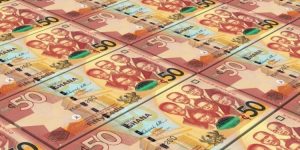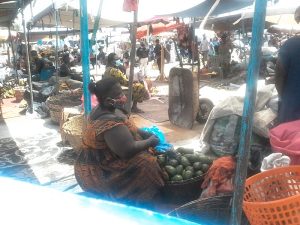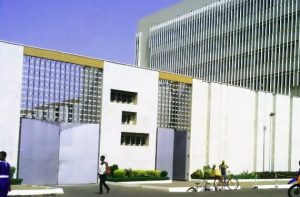Former Finance Minister, Seth Terkper, has said the Government of Ghana’s borrowing would have been larger, putting even more pressure on credit and interest rates in 2020.
But, he noted that, the BoG “bailed out” the government’s budget with GHc10b, equivalent to $1.7bn financing of the deficit.
He said over spending by the Ministry of Finance must be checked.
“Seems guns must be on MoF excess expense, not BoG policy rate program per se,” he said in a tweet.
Mr Terkper’s comments follow the US$1 billion Special Drawing Rights (SDR) allocation to Ghana by the International Monetary Fund (IMF).
He had earlier urged the government to utilize the US$1 billion within the framework of the law after the finance Minister Ken Ofori Atta said the funds are going to be used to support government’s budgetary needs.
“The minister of finance was quoted as saying that the money will be used for budgetary purposes including short- and medium-term needs of the government. But these are sovereign resources and all sovereign revenues must be paid into the consolidated fund under the constitution and the PFMA. Therefore, judging from the provision in our constitution alone, we are recommending that the money should go to parliament for appropriation.
Again, this is the second time the government will request the fund from departing from our tradition or convention of sending IMF resources to the central bank to shore up its reserves because it is in forex. And in actual fact, most IMF programme loans sent to the central bank are repaid by the central bank and not by the government. But we have had a departure after the takeover of the Extended Credit Facility (ECF).
And we note that another significant IMF loan that went to government is the Rapid Credit Facility (RCF) loan. The government requested the IMF that, instead of paying that money to the central bank, it should go into the budget. So we are urging that the current US$1 billion should go to parliament, given the laws that we have cited,” Mr Terkper told the B&FT.
“The largest allocation of Special Drawing Rights (SDRs) in history—about US$650 billion—comes into effect today. The allocation is a significant shot in the arm for the world and, if used wisely, a unique opportunity to combat this unprecedented crisis.
“The SDR allocation will provide additional liquidity to the global economic system – supplementing countries’ foreign exchange reserves and reducing their reliance on more expensive domestic or external debt. Countries can use the space provided by the SDR allocation to support their economies and step up their fight against the crisis.
“SDRs are being distributed to countries in proportion to their quota shares in the IMF. This means about US$275 billion is going to emerging and developing countries, of which low-income countries will receive about US$21 billion – equivalent to as much as 6 percent of GDP in some cases.
“SDRs are a precious resource and the decision on how best to use them rests with our member countries. For SDRs to be deployed for the maximum benefit of member countries and the global economy, those decisions should be prudent and well-informed.
“To support countries, and help ensure transparency and accountability, the IMF is providing a framework for assessing the macroeconomic implications of the new allocation, its statistical treatment and governance, and how it might affect debt sustainability. The IMF will also provide regular updates on all SDR holdings, transactions, and trading – including a follow-up report on the use of SDRs in two years’ time.
“To magnify the benefits of this allocation, the IMF is encouraging voluntary channeling of some SDRs from countries with strong external positions to countries most in need. Over the past 16 months, some members have already pledged to lend US$24bn, including US$15 billion from their existing SDRs, to the IMF’s Poverty Reduction and Growth Trust, which provides concessional loans to low-income countries. This is just a start, and the IMF will continue to work with our members to build on this effort.
“The IMF is also engaging with its member countries on the possibility of a new Resilience and Sustainability Trust, which could use channeled SDRs to help the most vulnerable countries with structural transformation, including confronting climate-related challenges. Another possibility could be to channel SDRs to support lending by multilateral development banks.
“This SDR allocation is a critical component of the IMF’s broader effort to support countries through the pandemic, which includes: US$117 billion in new financing for 85 countries; debt service relief for 29 low-income countries; and policy advice and capacity development support to over 175 countries to help secure a strong and more sustainable recovery.”







